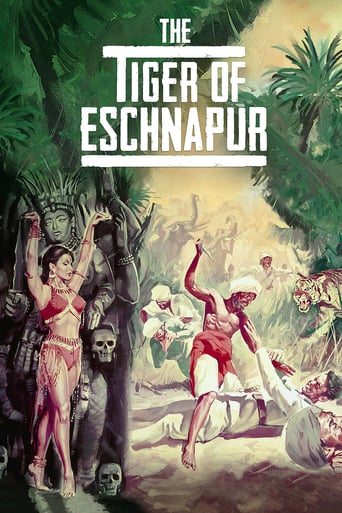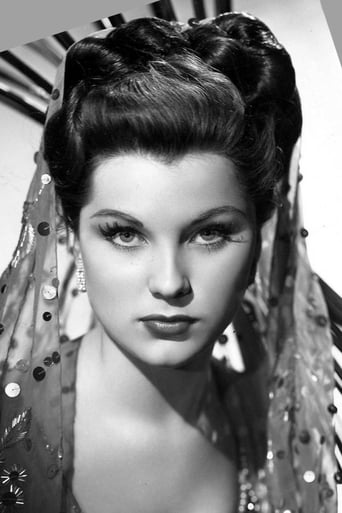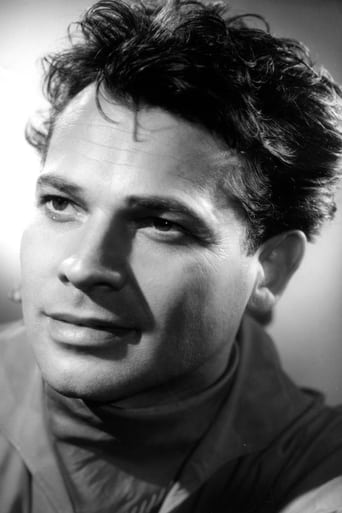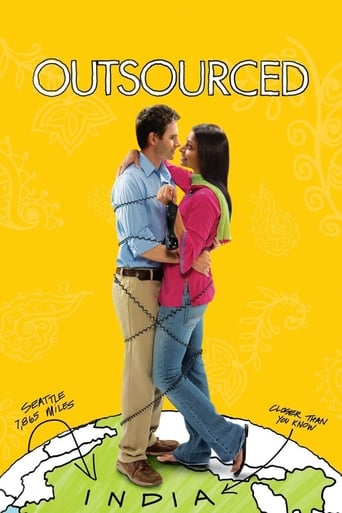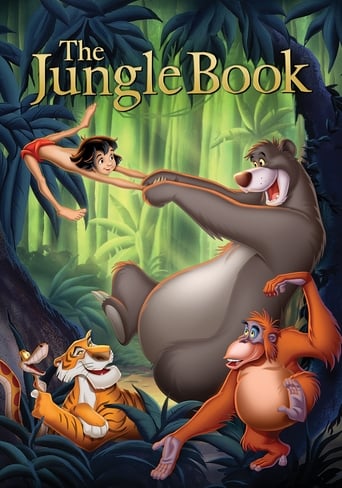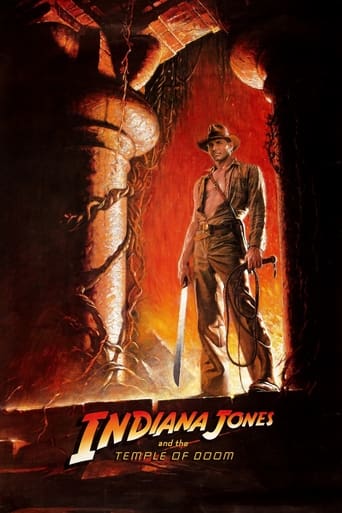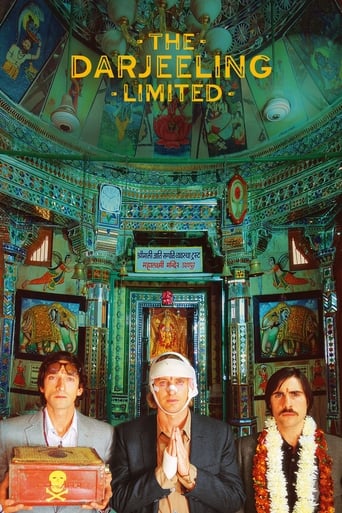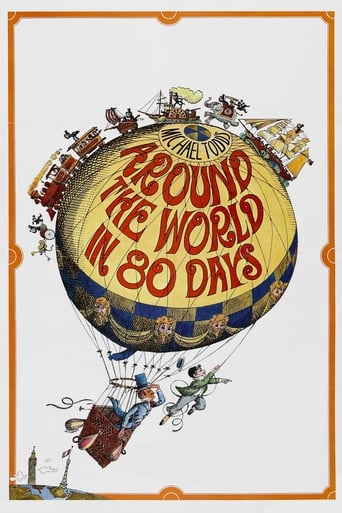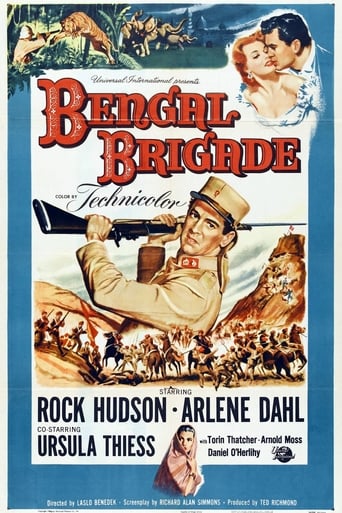The Tiger of Eschnapur (1959)
In Eschnapur, a German architect saves the life of the Maharajah's favorite temple dancer and becomes Maharajah's friend but their friendship is tested when the architect and the dancer fall in-love, triggering the Maharajah's vengeful ire.
Watch Trailer
Cast


Similar titles
Reviews
Why so much hype?
As Good As It Gets
n my opinion it was a great movie with some interesting elements, even though having some plot holes and the ending probably was just too messy and crammed together, but still fun to watch and not your casual movie that is similar to all other ones.
It's entirely possible that sending the audience out feeling lousy was intentional
At the end of his career, Fritz Lang made two films in India: The Tiger of Eschnapur (1959) and its sequel, The Indian Tomb (also known as The Tomb of Love) starring Debra Paget, Paul Christian (billed as Paul Hubschmid), Walter Reyer, Claus Holm and Luciana Paluzzi. (In 1960, both movies were combined and edited down to a mere 94 minutes. The resultant hard-to-follow pastiche was then released as Journey to the Lost City). I thoroughly enjoyed The Tiger of Eschnapur. Admittedly, the plot is Boys Own Paper stuff, but on its juvenile level, it offers plenty of spectacular action – and typical Fritz Lang suspense – set against some truly magnificent backgrounds. And who could resist Debra Paget as she appears here, so lovingly photographed and so exotically attired? The only draw-back is that the movie ends like the chapter of a serial and you are then forced to view The Indian Tomb to see how it all comes out. I found this sequel a little tiresome, but many of my colleagues disagreed. To them, this chapter was even more exciting and colorful than The Tiger of Eschnapur. I would hazard that how you react depends to some extent on the interval of time involved. I watched the sequel straightaway. My colleagues viewed it at intervals varying from a week to six months. Both films are now available on excellent DVDs.
Although it's rarely remembered as fondly as Metropolis or M, or even the numerous B-movies he made in the US, this picture represents an exceptional return to form for director Fritz Lang. At last, after years of slumming it with little pictures in Hollywood's big pond, The Tiger of Eschnapur reunites him with the pure and unbridled sense of adventure and the grandiose splendour which characterises his earliest pictures.Lang was famously not a fan of widescreen with which his latest American pictures were shot, and here we see just how well he could use the old fullscreen format. Depth is such an important aspect in his shots, with vast empty spaces conveyed through a downward angle that shows the floor or the ground stretching out before us, such as that shot of the deserted village during the "hour of the tiger". Much of the movement is in depth rather than across the screen, with business at the sides of the frame to create a tunnel effect. Lang, a former architecture student must have also been delighted at all the breathtaking Indian buildings and atmospheric studio recreations he gets to play with here. As usual with Lang, his characters appear trapped within the spaces they inhabit, with claustrophobic shot compositions and now even colour schemes that make people seem one with the background. There's a great and rather comical shot where the Maharajah is leaning against a pillar, in which the shape and style of his outfit mean he looks like a pillar himself. The fact that most of these rooms are real 360-degree spaces rather than backless sets also gives Lang a real advantage. Notice how in Debra Paget's lavish quarters in the gold birdcage scene, even the windows look out onto a high wall. Lang creates an impression of a palace of endless passages and no exits. It's this slightly nightmarish vision which really drives the adventure along.With the exception of Debra Paget, who had a handful of prominent Hollywood roles over the previous decade, the cast is mainly made up of Europeans who will be unfamiliar to most in an English-speaking audience. Lead man Paul Hubschmid is not a very interesting actor, but at least he underplays his performance – far preferable to awkward hamming. Ms Paget herself is not really exceptional either, but she does prove herself to be a superlative and hypnotic dancer. The real standout acting-wise however is Walter Reyer, who portrays the Maharajah as calmly authoritative, with just a hint of madness.One final point – fans of the Indiana Jones movies may find themselves recognising a few sights and scenes that remind them of stuff from The Temple of Doom. While a lot of Temple of Doom's plot comes from an older Hollywood movie called Gunga Din (1939), Fritz Lang's Indian diptych seem to have given Spielberg's picture much of its spirit. This is a comic book vision at India, barely realistic, but filled with a sense of both fun and genuine menace. Forget about Lang's reputation as a dark and cynical purveyor of film noir. Although he never got the recognition he deserved at the time, with his childlike sense of adventure and breathtaking imagery, when given his creative freedom he could be the Steven Spielberg of his era.
While traveling to Bengal, invited by Maharaja Chandra (Walter Reyer) to build schools and hospitals for his people, the German engineer Harold Berger (Paul Hubschmid) rescues the servant of the half-breed dancer Seetha (Debra Paget) from the harassment of a group of men in a fountain. They travel together to Chandra's palace and Berger saves Seetha from the attack of a tiger in the road through the woods. The widower Chandra intends to get married with Seetha and thanks Berger for his heroic attitude, giving an emerald ring to him to express his gratitude and friendship. Chandra proposes Seetha, but Berger and she are in love for each other and have secret encounters during the nights. Meanwhile Chandra's elder brother Prince Ramigani (René Deltgen) is plotting a scheme to grab power and trying to convince Chandra's brother-in-law Prince Padhu (Jochen Brockmann) to join him. When Chandra is informed that Berger secretly meets his beloved Seetha, he plots revenge against the engineer, but he escapes with Seetha through the desert. Chandra sends his men to hunt the couple while Berger's sister and her husband and Berger's partner Walter Rhode (Claus Holm) arrive to the palace to begin the construction of the buildings. However, Chandra changes his mind and orders the engineer to develop a project of a monumental tomb to his lost love. In the meantime, Berger and Seetha's horses die, they run out of water and they are surprised by a sand storm."Der Tiger von Eschnapur" is the first of the two "Fritz Lang's Indian Epics" of the director Fritz Lang in his return to German. The exotic and mystic romance has many action scenes and engaging subplots of betrayals, with the gorgeous Debra Paget performing magnificent choreography with her dance. The colors are splendidly restored in the DVD released in Brazil by Continental in the beautiful locations and sets. My vote is eight.Title (Brazil): "O Tigre de Bengala" ("The Tiger of Bengal")
Fritz Lang's last American work " beyond a reasonable doubt" was a commercial failure and it was panned at the time -nowadays ,and mainly in Europe ,critics are inclined to reverse their opinions.Actually "beyond a reasonable doubt " could easily be "remade" (God preserve us!) today because its screenplay with the unexpected final twist is trendy(1) .Afterward,Lang returned to Germany and began to film what was an old plan of his (it was filmed ,but by other directors),written by his ex-wife Thea Von Harbou.The gap between "Der Tiger von Eschnapur" and "beyond a reasonable doubt" (and "human desire" "while the city sleeps" "clash by night" "the big heat" etc) seems so wide that a lot of people did not recognize "their " Fritz Lang.One could answer them that ,already in the mid-fifties ,Lang had adapted for the screen "Moonfleet" ,his first color experiment with startling results .And "Moonfleet" too did not seem to belong to Lang's canon."Moonfleet " was a tour de force because it was a whole story seen through a child's eye.Something magic was born ,and it's this magic we find again in "Der Tiger von Eschnapur"."Der Tiger von Eschnapur" is a 4 million marks movie and the most accessible of all Lang's works:it can appeal to a child as much as to a professor .At first sight,it appears as an adventure yarn ,close to comic strip ,some kind of "Fritz Lang and the temple of doom" ,but a director like him cannot be brought down to only that."Der Tiger von Eschnapur" is a visual splendor ,with an unusually inventive use of color,which is not unlike his British peer Michael Powell (Black orchid,thief of Bagdad).Lang was an architect ,and it's impossible not to feel it,here more than in his entire American period. It's no coincidence if his hero (Henri Mercier/Harald Berger) is an architect too;they are always holding and studying plans .Lang's camera perfectly captures the space it describes .Mercier (Paul Hubschmid)is often filmed in high angle shot,in the huge palace of the Maharajah,in the tiger pit ,or later,in the second part ,in the dungeon where he's imprisoned.Actually,and it's obvious,it takes us back to Lang's German silent era ,particularly "der müde Tod" "die Niebelungen" and "Metropolis"."Der Tiger von Eschnapur" is essentially a movie of exposition:some scenes which seem overlong (Paget's dance),irrelevant(the lepers ) are actually necessary to prepare the stage for part two.And this leads us to one of Lang's permanent features:the coexistence of two worlds.Behind the lavishly furnished palace,the sumptuous clothes,the sparkling jewels ,there's another world beneath.The scene when Mercier meets the lepers scrawling on the ground ,and in a simpler but no less harrowing ,Baharani's blood seeping out of the basket are hints at a darker side of the luminous magic world of Chandra.There's a lot to say about "der Tiger von Eschapur" :the flight through the desert recalls sometimes Henri -Georges Clouzot's "Manon" (1949),as Mercier's madness breaks out and he begins to fire at the sun."Der Tiger von Eschnapur" is a must.(1) it was finally remade and as expected it was a disaster

